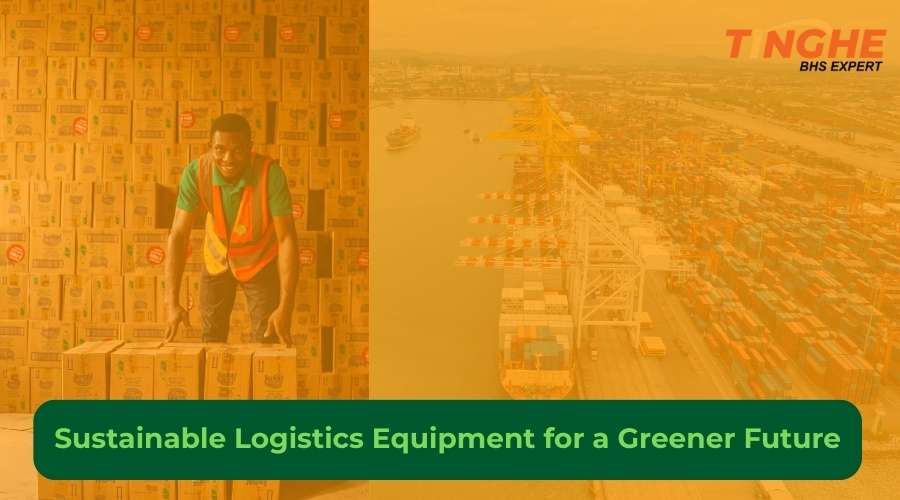
What if every delivery truck, warehouse, and package you touched left behind a cleaner footprint instead of a carbon-heavy trail? That’s not a fantasy anymore, it’s the growing reality of today’s logistics sector. Recent global studies have shown that transportation and logistics contribute nearly 24% of total energy-related CO₂ emissions worldwide. And as fuel costs climb and regulations tighten, industries are rethinking their approach.
The landscape of the global logistics market is gradually moving towards more climate-friendly practices. Where once the hum of diesel engines and energy-draining warehouses dominated, a new era of eco-friendly supply chain tools are steadily being adopted by various industrial sectors. Companies are turning toward technologies that cut down their emissions and minimize energy wastage, cut energy waste, and extend efficiency gains far beyond cost savings. This blog will dive into three critical areas: electrified fleets, intelligent warehouses, and sustainable packaging. Each one is contributing to green logistics solutions that are transforming the logistics sector for the better, making the future both profitable and planet-friendly.
Small steps like LED lighting upgrades, pilot electric deliveries, and better packaging design become leaps when aligned with a vision. Over time, these seemingly modest shifts compound, igniting transformation. Switching to an electric delivery van fleet and introducing right-sized packaging can make an outsized impact over time.
Imagine a logistics hub humming not with diesel engines but the quiet whir of electric motors and not just in concept, but on streets worldwide. That is the sound of the future. Indeed, hybrid and electric trucks now make up around 12% of new commercial vehicle sales in the logistics sector. That may sound like a modest ripple in the ocean of diesel fleets but it’s a surge in the right direction, and this trend is set to continue.
If we look beyond percentages, the impact feels tangible. In Europe and the UK, major automakers have committed to installing 1,700 fast-charging points for heavy-duty trucks, laying the groundwork for fleets to run clean and continuously. And in India, one trial ran 20 heavy-duty electric trucks over tens of thousands of kilometres’, showing clear operational savings, arguably turning the initial cost barrier into a strategic opportunity
Here’s the point: the rise of greener vehicles is real. What began as early experimentation is steadily becoming mainstream, and green logistics solutions aren’t just a trend, they’re becoming essential.
In the latest logistics model, the warehouse is not seen as an energy drain, but as a smart brain: controlled, tuned, predictive. On this front, the numbers do tell a positive story. More than 60% of warehouses in Europe now embrace energy-saving measures, and switching to LED lighting alone delivers around 40% average energy savings. Climate control systems that learn and adapt? They can cut energy costs by up to 30%. Add in smart automation—robots and automated storage and retrieval systems and energy demand can shrink by as much as 20% while operational efficiency climbs
Across the logistics industry, it’s clear: over 60% of companies have integrated sustainability into their strategy, and about 60% of warehouses are now outfitted with energy-efficient LED lighting. The change is already here and to remain competitive, it is vital to keep up. This is what energy-efficient warehouse equipment looks like in action: part of a broader shift that makes operations leaner, smarter, and more resilient.
Packaging is a major aspect of logistics and here also the eco-friendly revolution is at its peak. Most industrial leaders know that poorly sized boxes and plastic void-fill are waste multipliers. The statistics wake you up: in logistics, biodegradable and compostable packaging use has grown by around 60% since 2020. That’s not just a figure, it’s a shift, that is happening in realtime and which proves that environmental awareness has grown significantly.
Meanwhile, in packaging as a whole, reusable and eco-conscious materials are surging. One report gives a forecast that the sustainable packaging market will nearly double within a few years. So, if you are thinking that the eco-friendly supply chain tools are not smart and scalable, then this report suggests otherwise. Recycling content cuts emissions by up to half and 65% of logistics firms are already investing in these solutions
What does that mean on the ground? It's less overstuffed boxes and more precision, more reuse, less landfill. It’s circular economy thinking in motion, where green logistics solutions make sustainability tangible with financial upside too.
More than 70% of logistics firms now have a favourable view of sustainability and agree that it can accelerate their future growth. Nearly 80% plan to allocate more budget to utilizing clean energy. The math is hard to ignore: efficiencies that slash costs, equipment that pays back its investment, smarter Sorter Systems, and supply chains that become stronger and leaner by design.
The sustainability in logistics is no longer a dream anymore. It is happening now. The sweeping changes to the traditional logistics system include climate-friendly technologies like clean fleets, smarter warehouses, and eco-friendly packaging. Once thought of only as an ethical choice, these practices are now gamechangers that give firms competitive advantage in the long run. The industrial sector stands at a crossroads, and the choice is not if but how fast. The logistics engine drives global economies, and when it runs cleaner, smarter, and kinder, it delivers more than goods. It delivers a better future. The question for leaders is not whether to adopt sustainable logistics practices, but how quickly they can integrate them through steady, incremental changes.